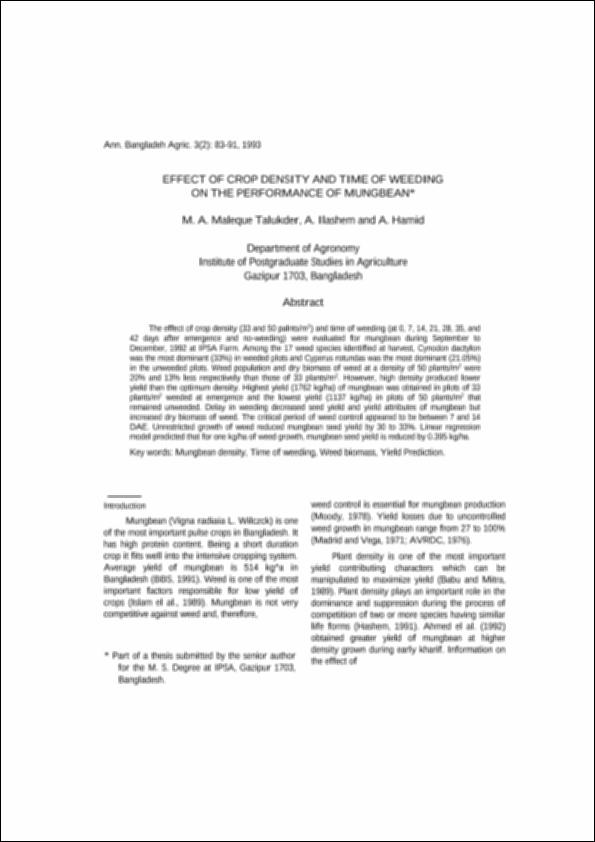| dc.description.abstract | The effect of crop density (33 and 50 palnts/m2) and time of weeding (at 0, 7, 14, 21, 28, 35, and 42 days after emergence and no-weeding) were evaluated for mungbean during September to December, 1992 at IPSA Farm. Among the 17 weed species identified at harvest, Cynodon dactylon was the most dominant (33%) in weeded plots and Cyperus rotundas was the most dominant (21.05%) in the unweeded plots. Weed population and dry biomass of weed at a density of 50 plants/m2 were 20% and 13% less respectively than those of 33 plants/m2. However, high density produced lower yield than the optimum density. Highest yield (1762 kg/ha) of mungbean was obtained in plots of 33 plants/m2 weeded at emergence and the lowest yield (1137 kg/ha) in plots of 50 plants/m2 that remained unweeded. Delay in weeding decreased seed yield and yield attributes of mungbean but increased dry biomass of weed. The critical period of weed control appeared to be between 7 and 14 DAE. Unrestricted growth of weed reduced mungbean seed yield by 30 to 33%. Linear regression model predicted that for one kg/ha of weed growth, mungbean seed yield is reduced by 0.395 kg/ha. | en_US |

